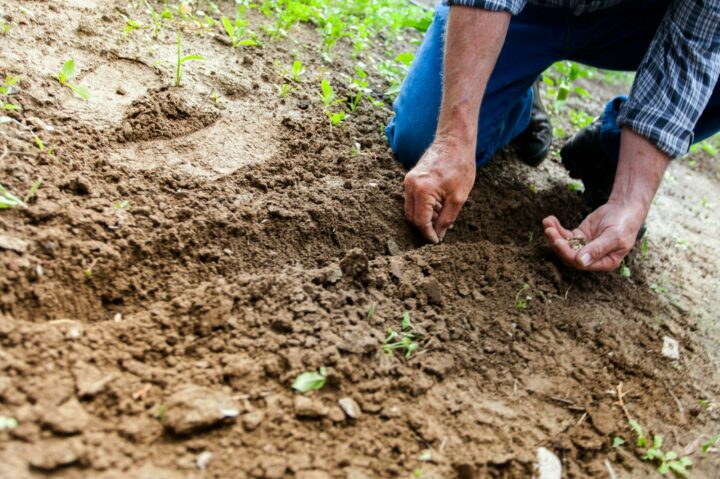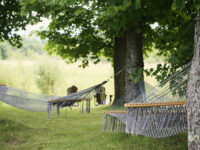The following contribution is from another author.
Choosing the perfect garden bench for your outdoor sanctuary involves not just a dash of style but also a measure of foresight into the material’s durability, sustainability, and comfort. It’s a pivotal element in garden design, capable of transforming a mere green space into a tranquil retreat. The right garden bench invites relaxation, offers seating to admire the fruits of your gardening labour, and serves as a social hub for outdoor gatherings. Given its significant role, selecting the best material for your garden bench deserves careful consideration.
Key considerations when choosing a bench material
When choosing the best material for your garden bench, several factors must be considered to ensure that the bench not only looks good, but also withstands the elements and fits well with the rest of your garden’s layout. Here are some key considerations to guide your decision-making process:
Space assessment
Before finalising your choice, carefully assess the available space in your garden. Measure the area to ensure the garden bench will fit comfortably without obstructing paths or overwhelming the space. Consider the proximity to other outdoor elements such as trees, walls, or fences. A well-proportioned bench enhances the garden’s functionality and aesthetic appeal, creating a harmonious balance with the surrounding environment.
Garden purpose
Reflect on the primary function of the bench. Whether it’s a quiet spot for reading, a decorative feature, or a seating area for social gatherings, the purpose will influence the size and style of the bench. For instance, a bench intended for large gatherings should be more robust and possibly longer than one meant for solitary reflection. Additionally, the style of the bench should complement the overall design theme of your garden, whether it’s modern, rustic, or formal.
Climate considerations
The local climate plays a crucial role in selecting the right material for your garden bench. Materials like teak and metal are preferred in areas with frequent rain due to their durability and resistance to rot and rust. In contrast, sunny climates might benefit from lighter coloured materials that reflect heat and resist UV damage. If your area experiences a mix of weather conditions, consider materials that can be easily maintained or treated to withstand various elements.
Wood garden benches
Wooden benches are a classic choice for enhancing outdoor spaces, offering both aesthetic appeal and functional benefits. When selecting wood for garden benches, understanding the various types, along with their advantages and disadvantages, is crucial for making an informed decision.
Common types
Among the most popular woods for garden benches are teak, cedar, oak, and redwood, each known for its unique properties.
- Teak is highly valued for its exceptional durability and natural resistance to the elements, making it ideal for outdoor furniture.
- Cedar is favoured for its natural resistance to rot and insects, although it is softer and less durable than teak.
- Oak is another robust option, offering remarkable longevity and strength, while redwood is preferred for its beauty and natural weather resistance.
Pros and cons of wooden benches
Wooden benches bring a natural and warm aesthetic to any garden setting. They are available in a variety of styles, from rustic to modern, allowing for great flexibility in design. The natural appearance of wood can also enhance the ecological feel of a garden, making it blend seamlessly with the outdoor environment.
However, wooden benches require more maintenance than those made from other materials. They need to be regularly treated with oils or sealants to protect against weathering, decay, and pests. Over time, wood can suffer from wear and tear due to moisture and UV exposure, which can lead to issues like rotting, cracking, or discolouration if not properly maintained.
Durability and upkeep
The durability of wooden garden benches greatly depends on the type of wood and the care provided. Hardwoods like teak and oak are naturally more durable and can last for decades with minimal maintenance, whereas softer woods like pine may require more frequent treatment to maintain their condition and appearance.
To preserve the longevity of a wooden bench, it is advisable to perform regular maintenance, including cleaning, sanding, and the application of a protective finish. This not only helps to keep the wood looking good but also extends its life by protecting against external elements. For woods prone to weathering, such as cedar, applying a water-repellent preservative can be beneficial to prevent moisture absorption and deter decay.
Metal garden benches
Variety of Metals
Metal garden benches offer a robust selection of materials, including wrought iron, cast aluminium, and stainless steel. Each type brings its own set of characteristics to the table.
- Wrought iron is traditionally moulded and hammered into intricate designs, offering a classic aesthetic.
- Cast aluminium, on the other hand, is known for its rust resistance and lightweight properties, making it easy to move and maintain.
- Stainless steel is celebrated for its strength and durability, able to withstand a variety of weather conditions without succumbing to rust or corrosion.
Advantages and disadvantages
Metal benches are renowned for their sturdiness and longevity. They require less frequent maintenance than wooden counterparts and are simple to clean—often needing just a quick hose down. Additionally, these benches do not absorb water, which is a significant advantage in damp climates.
However, they can be heavy and expensive, and the options in styles might be limited compared to other materials. Metal benches can also become uncomfortably cold or hot depending on the weather, and sitting surfaces might not always be level, making them less ideal for placing drinks or small items.
Care and maintenance tips
To ensure your metal garden bench remains in prime condition, regular cleaning and occasional maintenance are essential. Start by removing any debris with a soft brush, and wash the bench with warm, soapy water using a sponge or cloth. Rinse thoroughly with clean water and allow it to air dry. For ongoing care, check for any signs of rust or scratches, especially in hidden areas.
If rust does appear, remove it with a wire brush or sandpaper, clean the area, and apply a rust-preventing paint. To further protect the metal, apply a coat of car wax or a specialised metal protector to create a barrier against moisture and pollutants. Regularly oiling joints and fixings can also prevent squeaks and stiffness, ensuring smooth operation.
Plastic and Resin bench options
Types of Plastic Materials
Plastic and resin benches, often crafted from High-Density Polyethylene (HDPE), are made entirely from recycled materials such as plastic bottles and containers. This not only makes them a robust option for garden furniture but also supports environmental sustainability by reducing plastic waste. The use of polypropylene in these products ensures they withstand the rigours of outdoor settings, resisting damage from UV rays and moisture.
Benefits and potential drawbacks
One of the key advantages of plastic and resin benches is their maintenance-free nature. Unlike wood or metal, they do not require sanding, painting, or sealing, making them a cost-effective and time-saving choice for your garden. These benches are designed to be durable, often lasting significantly longer than traditional materials without splintering or rotting. Additionally, they are lightweight, which allows for easy rearrangement and storage.
However, it’s important to consider that, while plastic furniture is practical, it may not offer the same aesthetic appeal as other materials. Some styles might appear less sophisticated, and the design options can be somewhat limited compared to those available with materials like wood or metal.
Longevity and care
Recycled plastic benches are known for their longevity, often with guarantees of up to 25 years or more. They are highly resistant to environmental factors that typically degrade outdoor furniture, such as moisture, insects, and extreme temperatures. Cleaning these benches is straightforward, usually requiring nothing more than soap and water. For areas prone to graffiti or heavy dirt, simple household cleaners are effective for spot cleaning, ensuring the furniture remains in pristine condition throughout its use.
The material you choose for your garden bench is more than just an aesthetic decision; it is an investment in the future of your outdoor space. As we’ve seen, each option carries its own unique set of implications for maintenance, longevity, and environmental impact. But ultimately, this will help guide you in selecting the best garden bench material for your specific needs.

















Consider the primary function of the bench. Whether it’s a quiet spot for reading, a decorative feature, or seating for social gatherings, its use will determine the size and style. For instance, benches for large gatherings should be sturdier and longer than those for solitary reflection. Additionally, the bench’s style should complement the garden’s overall design theme, be it modern, rustic, or formal.
I loved gardening before until I found the most loving, engaging, and pure content game that can earn you real money I am talking about Higgs Domino Island but it is so costly so now you can download Higgs Domino MOD from this website.
Yes ali Asgher, I am also a gardener and I also play a game while working in the farm it is known as Fire kirin and I also earn real money from it. You can get Fire Kirin safely from this website.